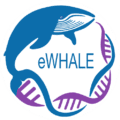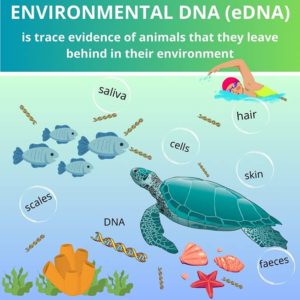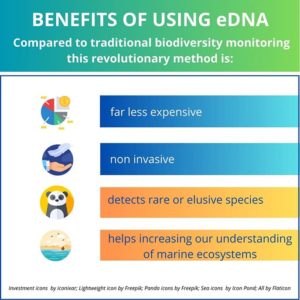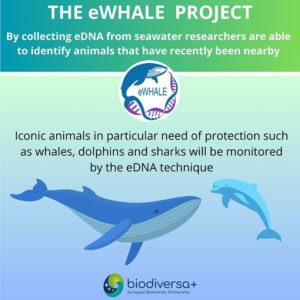The eWHALE Project: protecting marine biodiversity by eDNA sampling, whale watching and citizen science
Tethys will collaborate with a new project, funded by Biodiversa+, which unites researchers, industry and the public across Europe to implement a novel strategy for marine biodiversity monitoring by means of a new cutting-edge technology.
Among the most serious threats to our planet is the loss of its variety of life, which is in jeopardy because of human activities. On top of that, surveying animals and plants over vast areas on a regular basis in order to study and address the loss of biodiversity by traditional methods requires a lot of effort in terms of funding, equipment, and time.
Today, however, new techniques allow us to detect the presence of a species solely from the DNA traces it releases into the environment. The eWHALE project exploits precisely the use of environmental DNA (eDNA) to monitor biodiversity, and will be testing this method in the Northeast Atlantic and the Mediterranean.
This project specifically focuses on marine biodiversity. Data are produced from water samples collected in proximity to whales or dolphins, which contain trace amounts of DNA of the animals. Molecular analysis of these samples will provide information on whale population structure as well as their prey.
The Tethys Research Institute is contributing to the eWHALE Project with its expertise in marine mammals and by collecting samples of eDNA in the Pelagos Sanctuary in summer 2024 during the citizen science trips in the Pelagos Sanctuary. This will be part of the activities of the Cetacean Sanctuary Research (CSR), Tethys’ long term project in the NW Mediterranean. At the same time also whale watching operators will sample water in the Azores, Ireland and Iceland.
In this way, data collection will take advantage of platforms that are already at sea regularly. Compared to traditional field surveys, this method is more cost- and time-efficient and will generate an unprecedented dataset with high spatial, temporal, and taxonomic resolution.
Also the active involvement and education of participants in whale-watching trips are important components of the eWHALE project, aimed at bolstering public support for marine conservation efforts. Additionally, stakeholders such as policymakers, NGOs, and natural resource managers will be engaged, as their involvement will be crucial for establishing effective marine biodiversity protection measures. The project commenced in January 2023 and will continue until December 2025.
What is eDNA?
DNA is the genetic material, based on a universal code, that we share with all other living organisms. It allows to recognize a species, or even an individual.
Each organism releases small fragments of its DNA into the environment. In the marine environment researchers are able to detect it by filtering seawater.
The new technique
For the past few years, researchers have been experimenting a new method: detecting environmental DNA to monitor the presence of animals or plants without actually spotting or taking them. Therefore, this technique is a revolution in the preservation of biodiversity. Data collection is relatively simple: samples of water can be taken during whale watching outings, from ferry lines, by fishermen, etc. The eWHALE project tests the feasibility of the new technology, paving the way for a regular and easy monitoring of biodiversity in the ocean.
Why start with whales?
Oceans exhibit the highest rate of biodiversity change and are difficult to monitor because of their vastness and inaccessibility. Moreover, most marine species remain “beneath the surface”, far away from the public spotlight.
In the ocean, whales, dolphins, turtles, sharks and other large fish (megafauna) are keystone species; they are indicators of their habitats’ health and they have a structuring role within their ecosystems.
Thus, by protecting whales, we protect their entire food web as well. On top of that, whales are among the most fascinating animals on earth: by using them as flagships, the project also aims to raise public awareness at marine conservation.
Get involved
The involvement of the public (citizen science) aims to transform research on marine biodiversity and protection from a purely scientific task into an activity in which all members of the public with access to the sea can participate.
You can take part in the testing of the eDNA technology by participating in Tethys’ summer expeditions of the Cetacean Sanctuary Research or in an outing of one of the involved whale watching operators.














